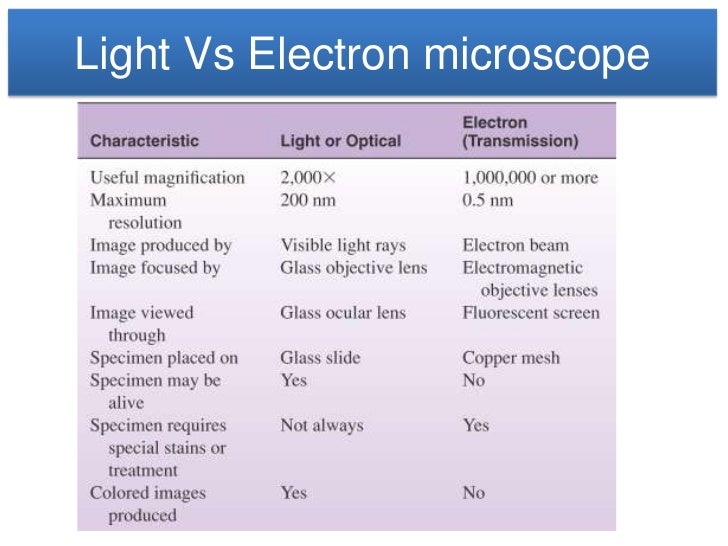
Microscope
20 Differences Between Light Microscope And Electron Microscope (With Comparison Chart) Facebook Twitter What Is A Light Microscope? Microscopes are very important tools for scientists; they are used in microbiology, material science, mineralogy and medicine.
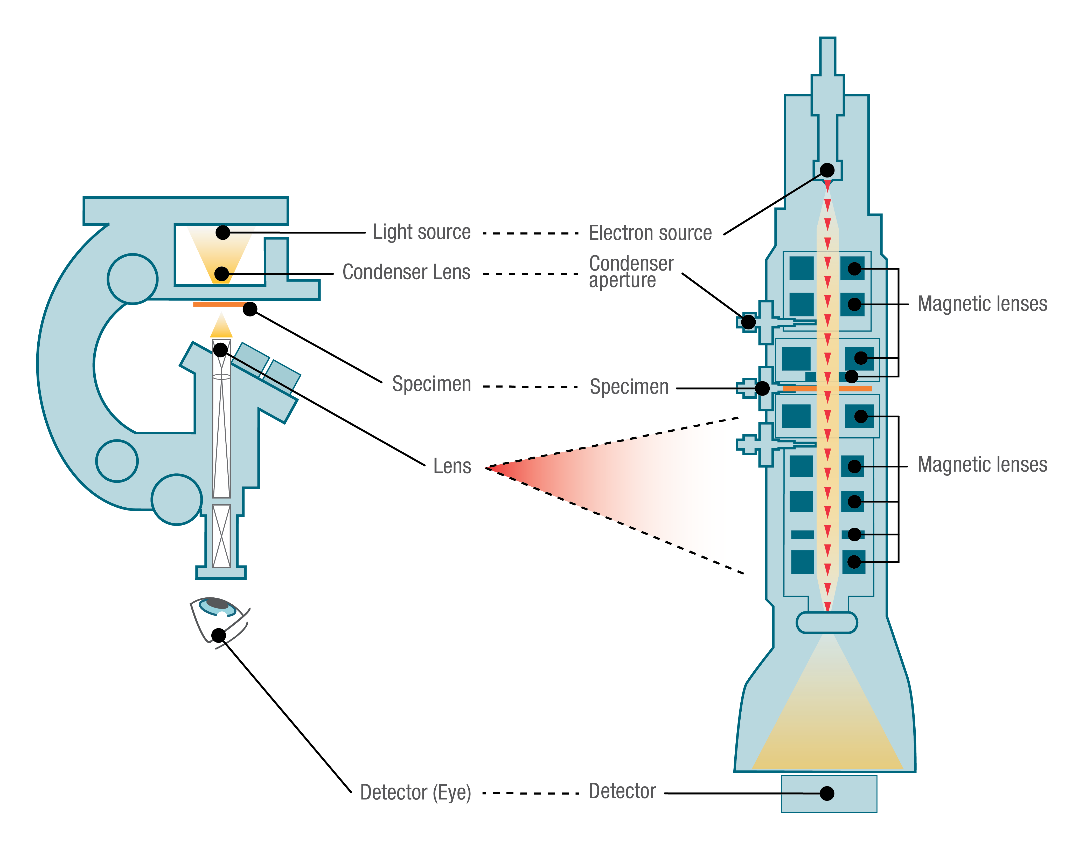
Light Microscope vs Electron Microscope Life in Atomic Resolution
Light Microscope. Electron Microscope. Illuminating source is the Light. Illuminating source is the beam of electrons. Specimen preparation takes usually few minutes to hours. Specimen preparation takes usually takes few days. Live or Dead specimen may be seen. Only Dead or Dried specimens are seen. Condenser, Objective and eye piece lenses are.
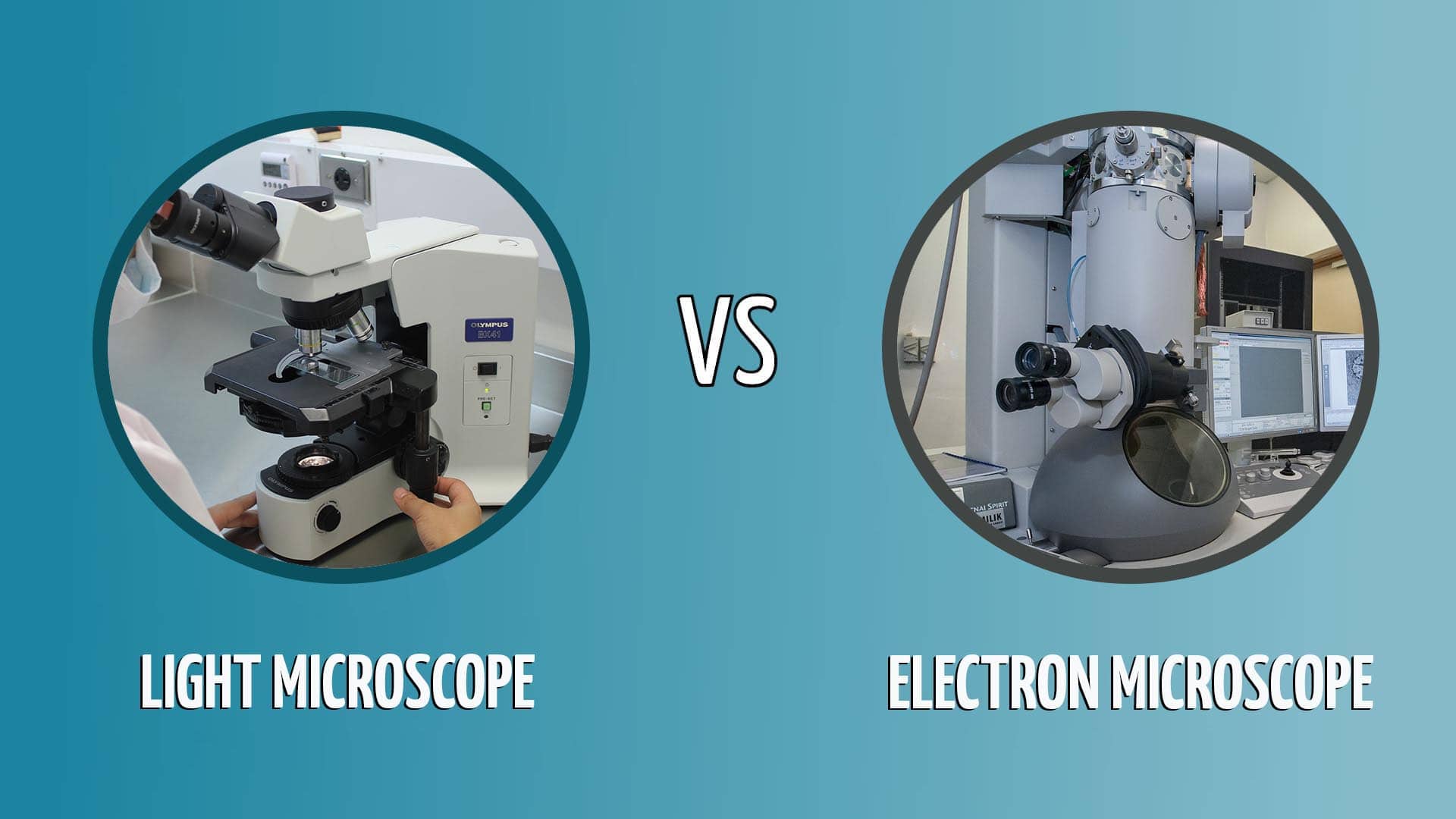
Light vs Electron Microscope What's the Difference? (With Pictures) Optics Mag
The difference between light and electron microscope is mainly due to the two properties like one is the source of illumination, and the second is the type of lens. Source of illumination: It is the property of a microscope that ensures the clear visibility of the object or specimen and adds brightness to it.
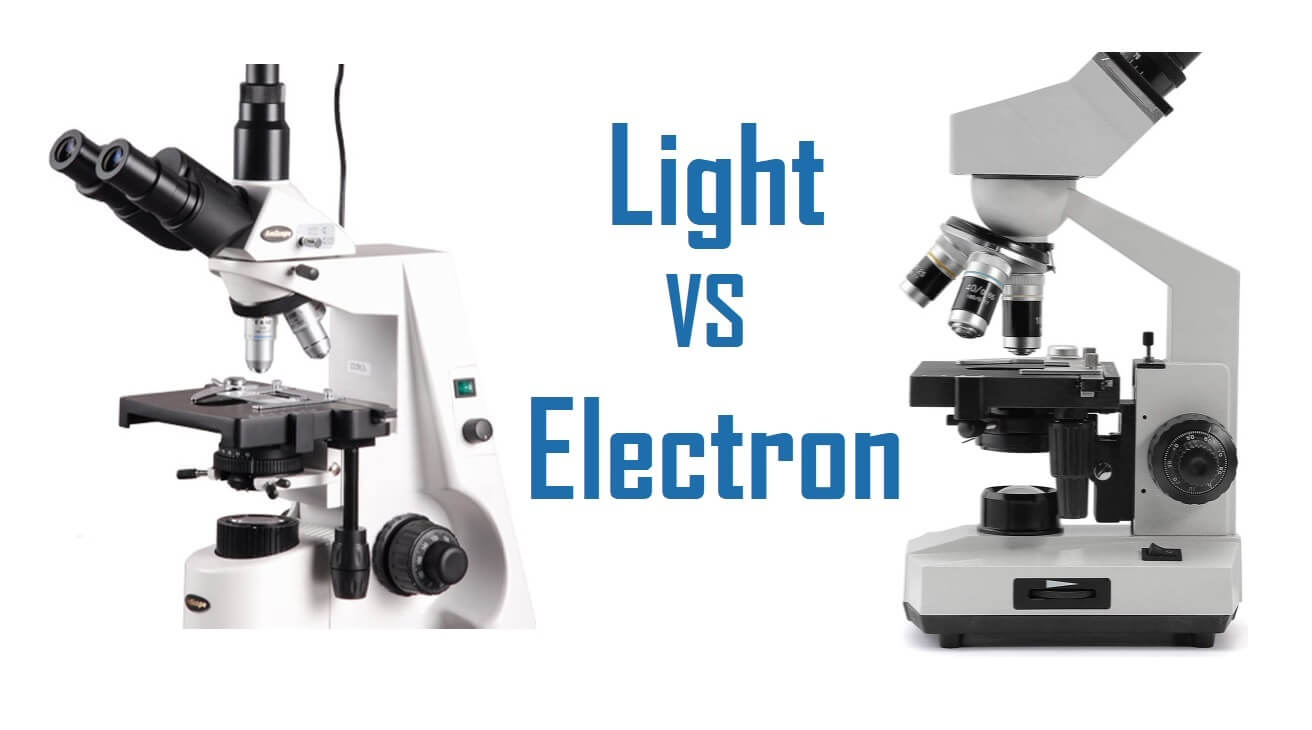
Difference between Light and Electron Microscope Microscope Crew
Magnification and resolving power is the key difference between Light Microscope and Electron Microscope which is about 1000X of the magnification with resolving power of 0.2um in Light Microscope and that of Electron Microscope is 10,00,000X magnification with resolving power of 0.5nm or even less.. Microscopes are used to know the exact shape, function, and other features of microorganism.
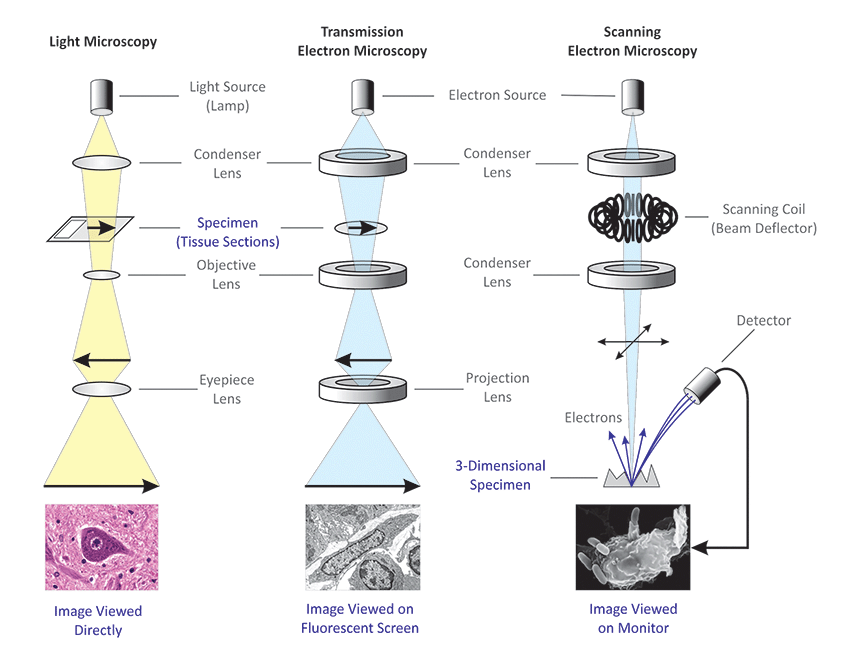
Differences between Light Microscope and Electron Microscope
View Light microscopes can have impressive magnification levels of up to 1000x. That's enough magnification to allow you to watch cells reproduce or examine platelets in your blood.
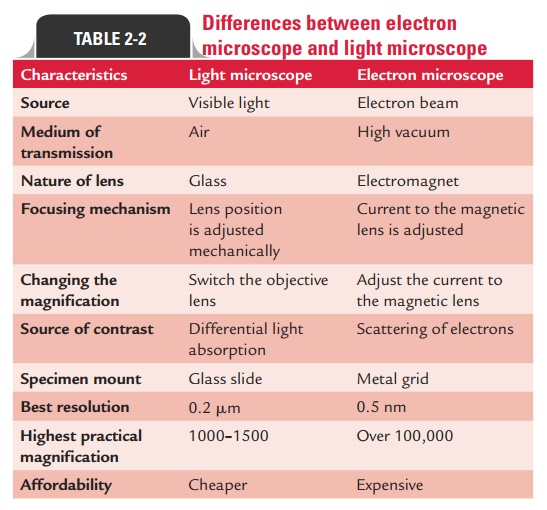
Microscopy and Types of Microscopy
The key difference between light and electron microscope is that a beam of electrons is employed for magnifying the image of an object while visible light is used in the light microscope to magnify images of spotted areas of materials or biological specimens.
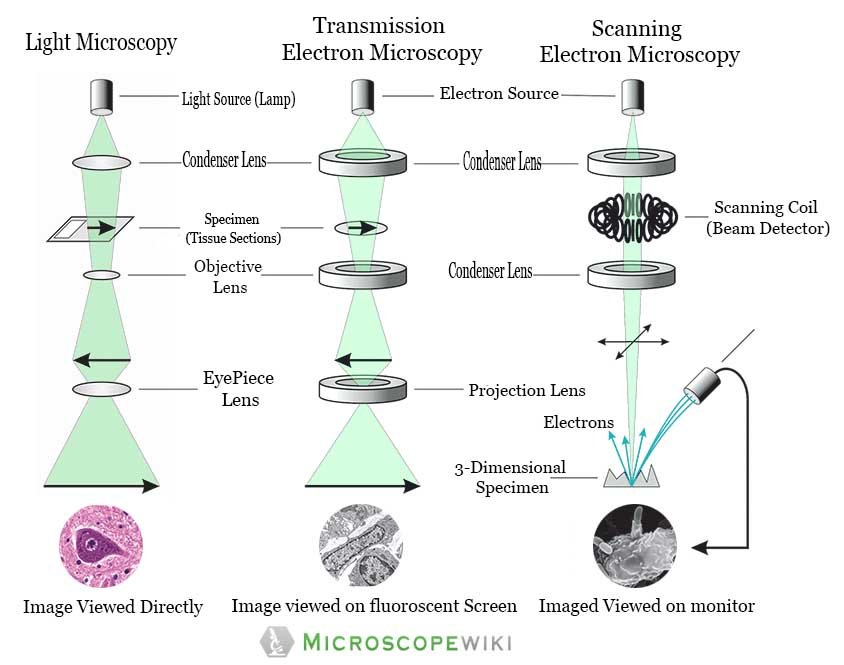
What Are The 3 Main Differences Between Light And Electron Microscopes
Light microscopes are easy to operate, while electron microscopes show hidden features and have superior resolution. Budget, sample size, and detail level determine which equipment is best for a scientific inquiry. New imaging methods and hybrid systems may help us discover the invisible world as technology advances.
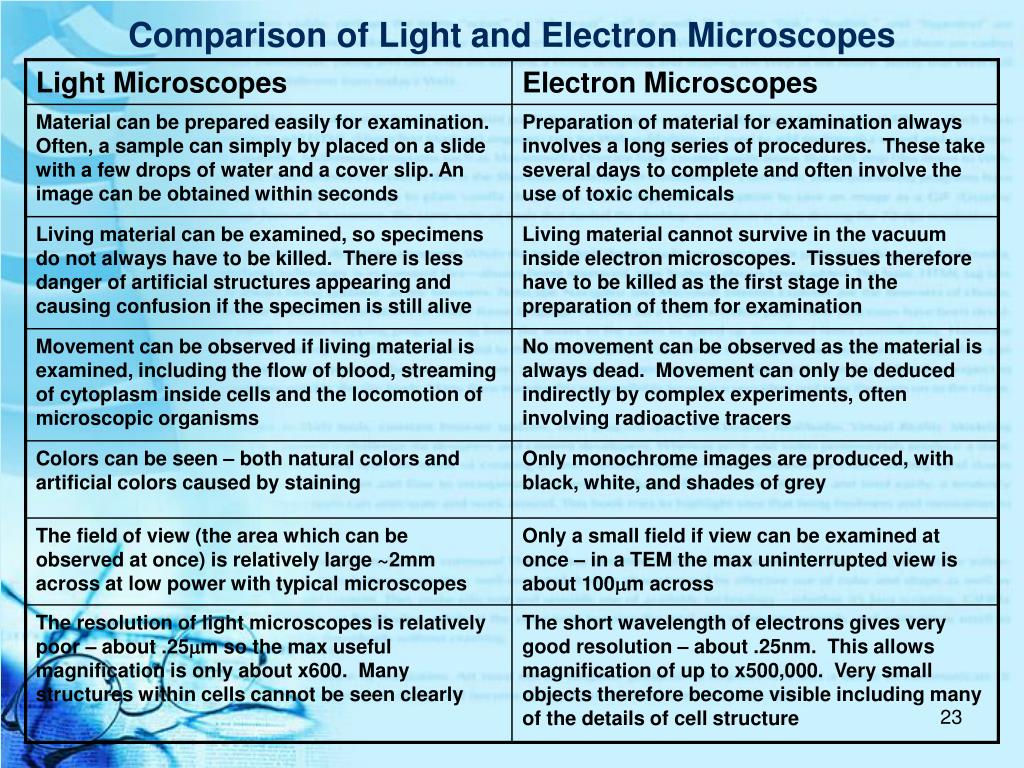
PPT Microscopes and Cells PowerPoint Presentation, free download ID6710166
Summary of instrument comparison Overall, while there are different principles controlling and guiding the incident beam for both instruments, the process of image generation is broadly the same. A beam interacts with the sample and passes through to the other side; the changes in beam energy correspond to different features in the final image.
Different between light microscope and electron microscope.
Greg Foot explains the main differences between light and electron microscopes A replica of Robert Hooke's compound microscope We need microscopes to study most cells. Microscopes.

Difference between Light and Electron Microscopy
While a light microscope uses light to illuminate specimens and glass lenses to magnify images, an electron microscope uses a beam of electrons to illuminate specimens and magnetic lenses to magnify images. The resolution (the level of image detailing) is the main difference between these two microscopes.

Differences Between Light And Electron Microscope Bbc Bitesize Adiklight.co
The main difference between light and electron microscopes is the radiation used to form an image; the 'light' and 'electron' in the names refer to the radiation being used. Using visible light as a radiation has several limitations, which the electron microscope lessens. However, light microscopes are much more practical in general use.

Difference Between Light and Electron Microscopes
Differences: Size: Light microscopes are smaller and lighter, so are easier to move and set-up. Cost / Availability: Light microscopes are less expensive than electron microscopes. Radiation Type: Light microscopes use light (approx wavelength 400-700 nm), electron microscopes use beams of electrons (approx equivalent wavelength 1 nm).

What Are The Main Differences Between A Light Microscope And An Electron Microscope
A light microscope utilizes a beam of light to observe tiny microorganisms like mitochondria, whereas an electron microscope, such as scanning electron microscope, uses a beam of electrons to enlarge a minuscule specimen. Let's have a brief overview of these microscopes through a comparison chart, and move towards details. Table of Contents

Light vs Electron Microscopes YouTube
Light Microscope vs Electron Microscope: 7 Main Differences Home » Microscopes Light Microscope vs Electron Microscope: Which Can Show More? With this article, you will learn what light microscope vs electron microscope really means - from their working processes to construction differences and fields of use By James Harper Reviewed By
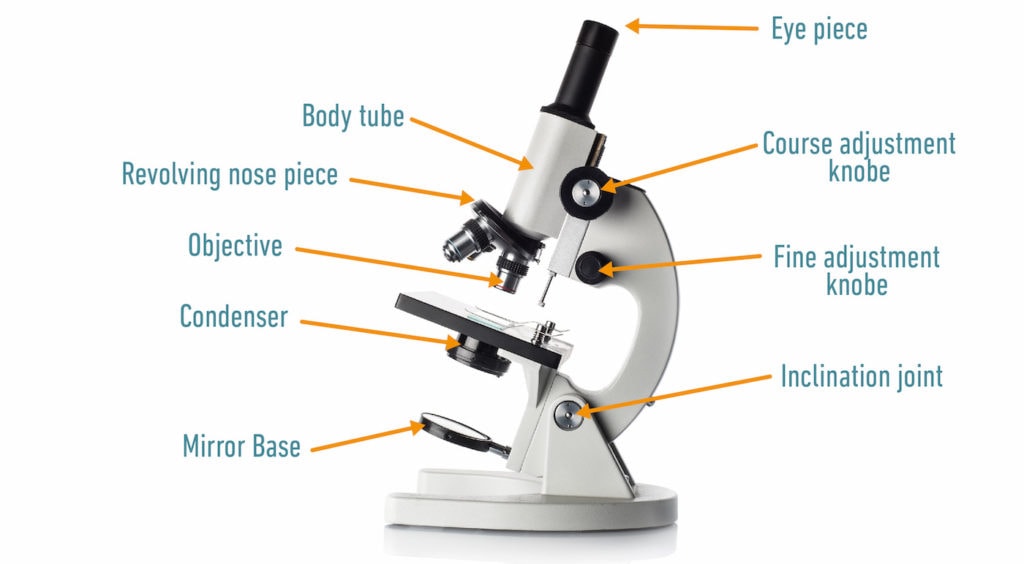
Light vs Electron Microscope What's the Difference? (With Pictures) Optics Mag
There are two fundamental types of microscopes; they are optical (light) microscopes which employ glass lenses and visible spectrum of light; and electron microscope which employ electromagnetic lenses and beam of electrons for image formation.
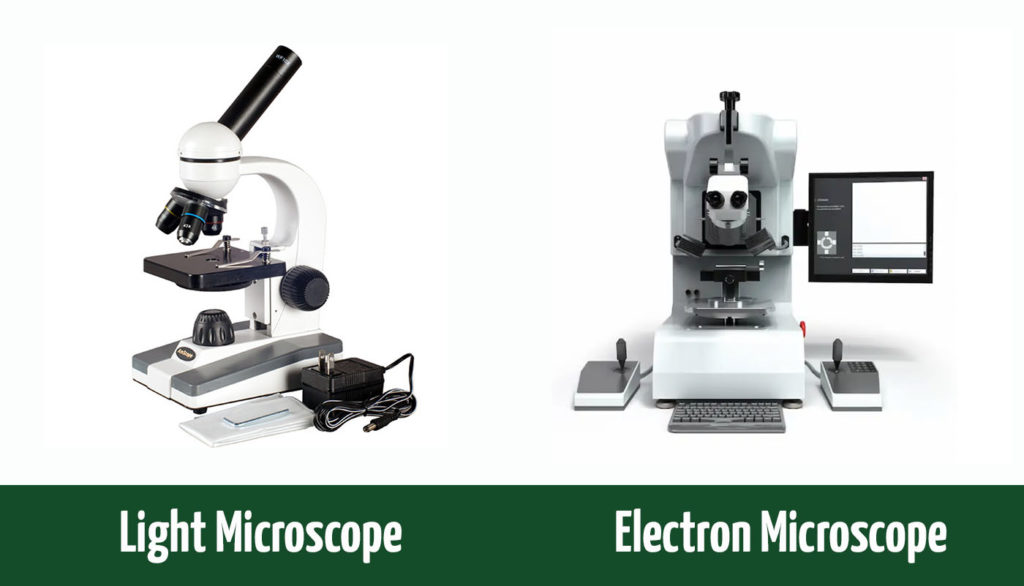
Light vs Electron Microscope What's the Difference? (With Pictures) Optics Mag
Light microscopes (optical microscopes) and electron microscopes are both used to look at very small objects. The main difference between light microscope and electron microscope is that light microscopes use beams of light to illuminate the object under examination while the electron microscope uses beams of electrons to illuminate the object.